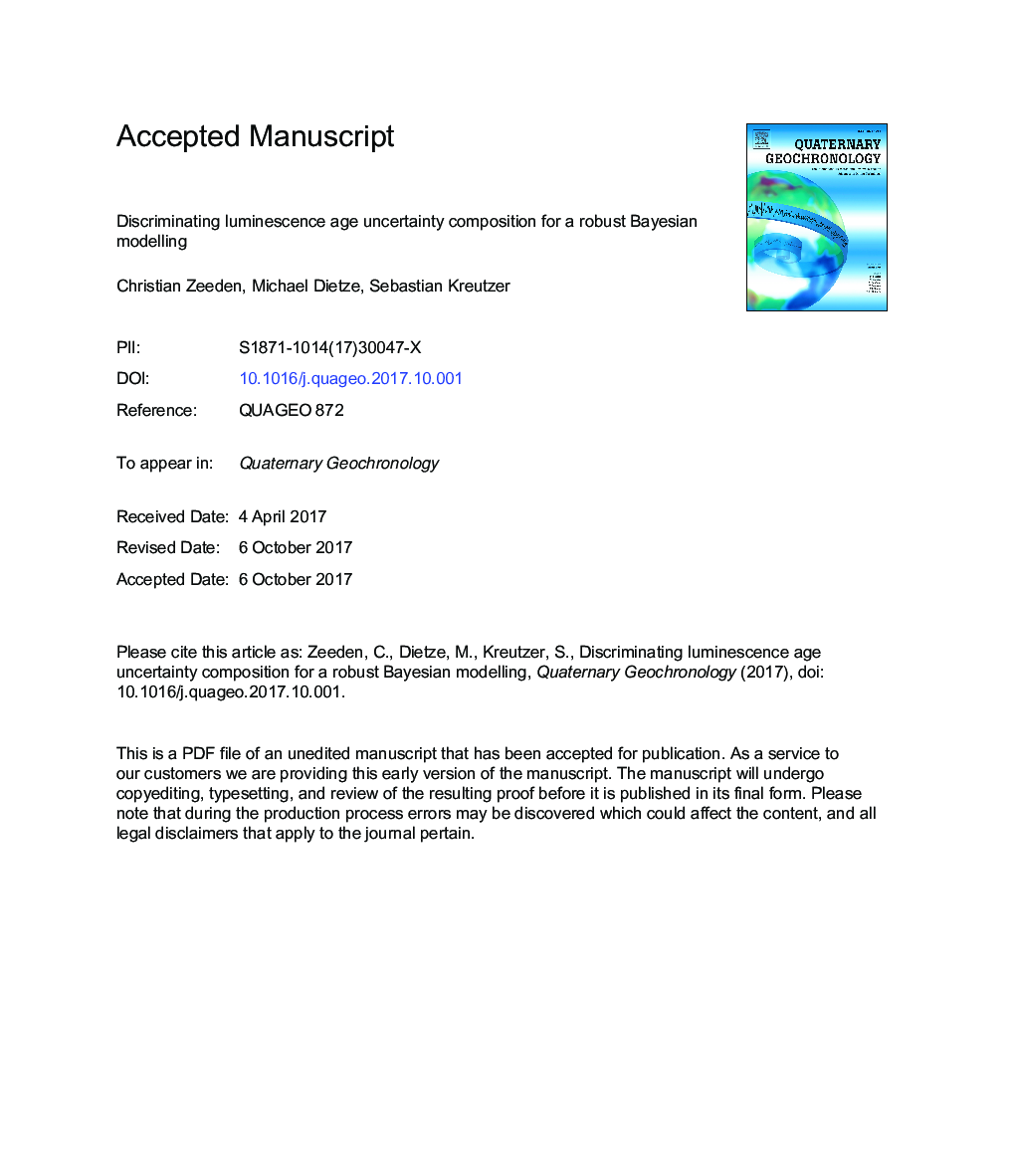| Article ID | Journal | Published Year | Pages | File Type |
|---|---|---|---|---|
| 5784931 | Quaternary Geochronology | 2018 | 37 Pages |
Abstract
Age-depth-relationships are essential to understand expressions of Earth history. Age-depth-relationships reveal the environmental significance of (terrestrial) sediment deposits and relate them to other paleoenvironmental archives. Although luminescence-based ages are of paramount importance, their incorporation in age-depth-models is limited due to the convolved uncertainties with unknown proportions of systematic and random parts. Here, we use an inverse modelling approach for fine-grained quartz OSL ages of loess deposits to (i) generate a probability density function of the random uncertainty part and (ii) use this function to recalculate and improve stratigraphically related OSL ages. Our approach can be applied to other luminescence dating techniques. Applying the algorithm to synthetic data sets generates valid results, despite an average underestimation of the relative random uncertainty by â¼18%. All tests show that precision of the inverse modelling of uncertainty parts depends only on the number of samples per dataset. By using the output of the approach on published data the precision of a late Pleistocene loess sequence chronology was improved by 21-30%.
Related Topics
Physical Sciences and Engineering
Earth and Planetary Sciences
Geochemistry and Petrology
Authors
Christian Zeeden, Michael Dietze, Sebastian Kreutzer,
